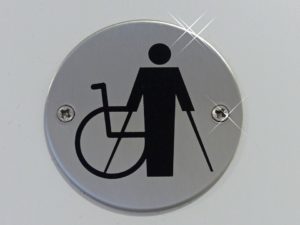The Need for Accessible Destinations
Tourism destinations are at the heart of all tourism activity. All travellers should be capable of travelling to a destination and, once there, move around and visit any sites or attractions they wish to get to know.
 An accessible tourism destination is one that has implemented accessibility in all the links of the tourism value chain, including infrastructure and transportation systems, communication formats and promotion of the destination. This is achieved through the systematic implementation of enhancements in every element, and the collaboration of all agents, both public and private, to carry them out.
An accessible tourism destination is one that has implemented accessibility in all the links of the tourism value chain, including infrastructure and transportation systems, communication formats and promotion of the destination. This is achieved through the systematic implementation of enhancements in every element, and the collaboration of all agents, both public and private, to carry them out.
There are different tourism management models that may be applied in carrying out specific actions such as tourism accessibility plans, financial assistance, specialized advisory services, and promotion of pro-accessibility initiatives; but what all models share is that they constitute a gradual process lasting over time, requiring systematic data collection and continuous evaluation.
 A series of success stories have been recorded for decades now in destinations that meet these requirements and have been pioneers in developing these measures. If a destination is not only residential but predominantly a tourism destination, the efforts made by places like these to adapt has led to an increase in the number of tourists, which will make it possible for accessibility to be integrated within mainstream tourism in the medium-long term.
A series of success stories have been recorded for decades now in destinations that meet these requirements and have been pioneers in developing these measures. If a destination is not only residential but predominantly a tourism destination, the efforts made by places like these to adapt has led to an increase in the number of tourists, which will make it possible for accessibility to be integrated within mainstream tourism in the medium-long term.
Developing accessible tourism destinations also constitutes an advantage for national tourism administrations. They collaborate in promoting and disseminating accessible tourism, which has a positive and significant impact on the quality of the regional and national tourism system and leads to obvious competitiveness gains for the country in terms of its tourism products and services.
For example, increased accessibility in Japan has been a response to the needs of its own inhabitants. Their dedicated response to this need has made the country one of the most accessible countries in the world. Under the Design for All paradigm, accessibility actions have been included in a project whose motto is making things usable by everybody, with no distinctions regarding abilities, age, height, language, etc. All of this has contributed to creating a welcoming atmosphere for tourists, with or without disabilities, making Japan an outstanding accessible tourism destination.
*From The Manual on Accessible Tourism for All

